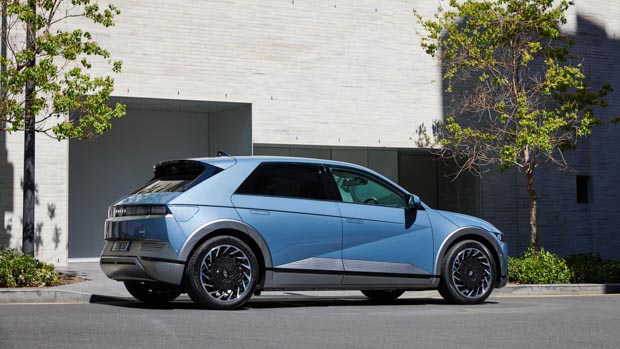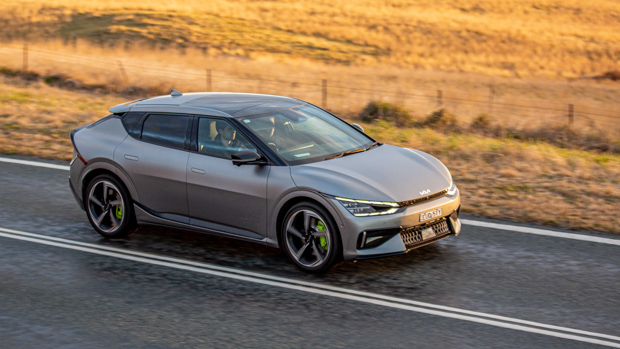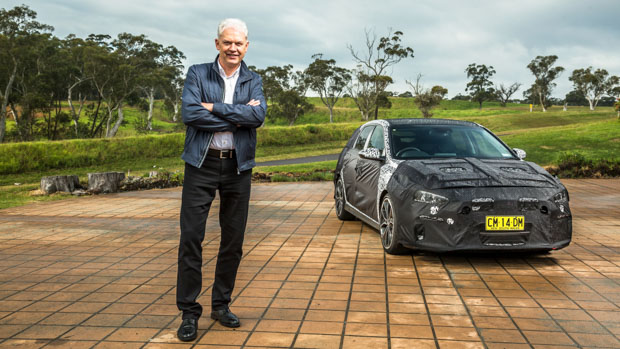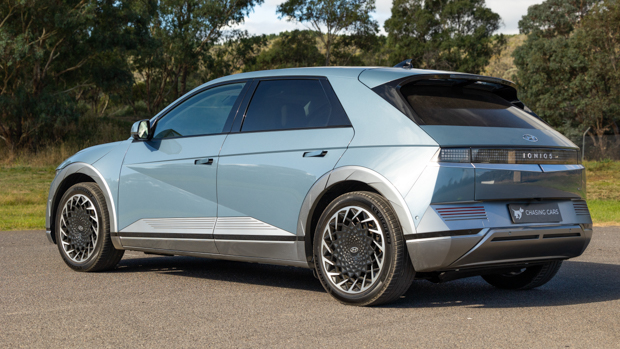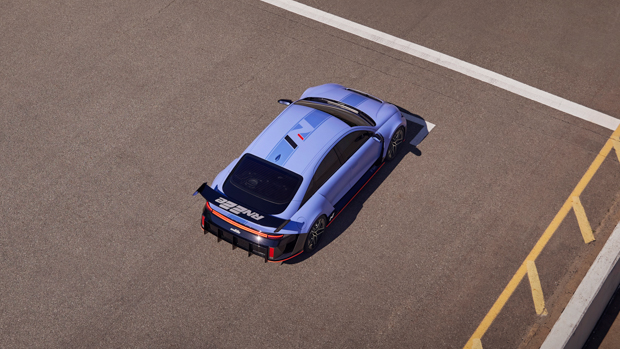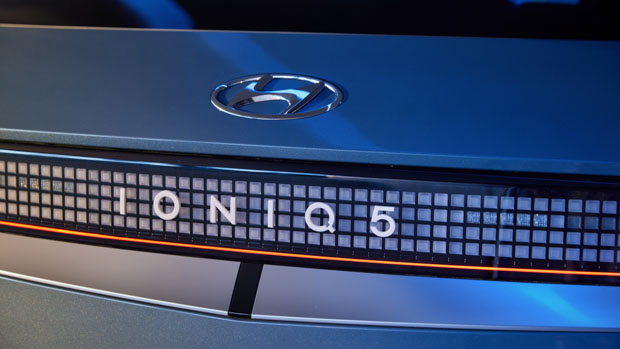-
Car Reviews
- All reviews
- Midsize SUVs
- Small cars
- Utes
- Small SUVs
- Large SUVs
- Large cars
- Sports SUVs
- Sports cars
- Vans
Latest reviews
- Car News
-
Car Comparisons
Latest comparisons
- Chasing Deals
Hyundai N division guru Albert Biermann says stronger cooling, different battery and bigger brakes will make the Ioniq 5 N the pick for hardcore track use
While on paper the mechanicals of the forthcoming Hyundai Ioniq 5 N and Kia EV6 GT performance electric vehicles look similar, the man charged with developing both vehicles says they will have very different characteristics in the real world.
Albert Biermann, Hyundai’s well-known senior executive poached from BMW M to run the brand’s then-new N performance car division, is now the project manager of the Hyundai Ioniq 5 N program.
However, the German-born Biermann also served as the executive technical advisor on the Kia EV6 GT development project and so has an intimate understanding of both watershed vehicles.
Read more about Hyundai’s future plans for its N cars in the electric age:
The EV6 GT is set for release in Australia in January 2023, while the Ioniq 5 N will launch locally about a year later. Each is the first performance-orientated EV from their respective manufacturer, but of the pair, only the Hyundai Ioniq 5 N has truly been developed to cope with hardcore track driving, Biermann says.
“When we developed the Kia EV6 GT…it was never supposed to be a racetrack-capable car,” Biermann said. “It was not in the script to develop a racetrack-capable, high-power EV like on the Ioniq 5 N [program].”
Biermann said track validation did occur while developing the EV6 GT but indicated that survival on track for more than brief stints was not part of the brief.
“[The EV6 GT] is different from an N car,” Biermann said. “An N car has to be on the track, and survive on the track, for a certain amount of time. The Ioniq 5 N would survive much longer on the track.”
It is a view confirmed by Biermann’s successor-of-sorts at Hyundai. Till Warternberg, vice president of N brand management, told Chasing Cars that “there is clear differentiation between the two brands.”
Kia Australia confirmed recently to Chasing Cars that the local tune of the EV6 GT targets a suspension quality closer to a rally car than a race car – and that excellent compliance over backroads is a target, matching the ‘GT’ nomenclature.
At first glance, the two sporty midsize electric crossovers sound similar. Both share a usable battery capacity of 74kWh, and make use of commonly-developed dual electric motors with identical combined outputs of 430kW/740Nm providing AWD traction.
Both cars use the Hyundai group’s sophisticated, 800-volt e-GMP electric vehicle architecture that allows for ultra-rapid charging and the capability to replenish 80 percent of the battery’s capacity in under 20 minutes with a 350kW charger. For road use, range is rated at 424km – on track this could be as low as 50-100km.
Scratch beneath the surface, though, and differences begin to appear. The Ioniq 5 N’s four-piston monoblock-caliper front brakes are likely to feature larger 400mm hybrid discs than the 380mm units fitted to the EV6 GT.
You’d have to dive even further into the chassis to find what Biermann isolates as key differences that will allow the Ioniq 5 N to be driven harder and longer on track without the electric motors ‘de-rating’ – or providing substantially less power – due to excess heat.
“The brake dimensions are a different story [as is] the cooling area,” Biermann said. “On an N car, typically, we dig a lot deeper. Of course, the EV6 GT already got some deep digging – but not like the Ioniq 5 N.
“There is a different battery in the Ioniq 5 N [compared to the EV6 GT]. We put more emphasis on cooling. We will get every potential out of the cooling system to make the car survive as long as possible when you push it hard.”
Chasing Cars understands that the development target for the Ioniq 5 N’s superior battery and motor cooling system is to allow the car to complete two laps of Germany’s 20.81km Nürburgring Nordschleife circuit without de-rating.
This target has almost been achieved. Project insiders speculate that upon release, the Ioniq 5 N might outlast the Porsche Taycan on the Nordschleife without de-rating and should easily eclipse the Tesla Model S Plaid’s stamina on the same circuit.
What is shared with the EV6 GT is what Biermann calls a “heavily modified” adaptation of the same rear motor used by regular 239kW AWD versions of the Hyundai Ioniq 5 and Kia EV6, which are both already sold in Australia and share Hyundai’s 800-volt e-GMP architecture.
Compared to the standard rear motor, the high-performance models upgrade from a single to a double inverter—allowing a power increase from 239kW to 430Nm. Simultaneously, the motor’s spinning speed is accelerated from 15,000rpm to 21,000rpm, which makes a top speed lift from 185km/h to 260km/h possible.
Additionally, the cooling of the 270kW rear motor is upgraded, with further oil channels allowing for temperatures to be controlled more efficiently throughout more areas of the motor.
At launch, both the Ioniq 5 N and EV6 GT will use an e-LSD on the rear axle for stronger corner exit, though Chasing Cars understands Hyundai will upgrade the Ioniq 5 N’s rear end at the car’s circa-2025 midlife facelift to real-time torque vectoring via a twin-clutch rear differential.
This hardware is currently being tested on the Hyundai RN22e prototype that foreshadows technology that will filter through to Hyundai’s production high-performance EVs in future. It is not yet known whether the EV6 GT will receive this bespoke rear end.
At the other end, the Ioniq 5 N will use the mechanicals and packaging of the 160kW front motor from the Genesis GV60 luxury SUV that shares the car’s e-GMP platform.
Hyundai is completing final development and testing of the Ioniq 5 N at the company’s facilities in South Korea and Germany before signoff on the final production version is set to occur within months.
The design of the Ioniq 5 N will be unveiled in early- to mid-2023 and European deliveries will begin before the year is out – but an Australian release date is not pencilled in until 2024.
When it is released, the Ioniq 5 N will sit above the high-specification Ioniq 5 Epiq in the local lineup. The Epiq is dual-motor AWD and provides 239kW of power.
Later still, Chasing Cars understands that Hyundai will release an Ioniq 6 N sports sedan to directly compete with the Tesla Model 3 Performance. The design of that car is foreshadowed by the Ioniq 6-based shape of the RN22e prototype that is currently in Australia.
All prices listed are before on-road costs.
Latest news
About Chasing cars
Chasing Cars reviews are 100% independent.
Because we are powered by Budget Direct Insurance, we don’t receive advertising or sales revenue from car manufacturers.
We’re truly independent – giving you Australia’s best car reviews.
